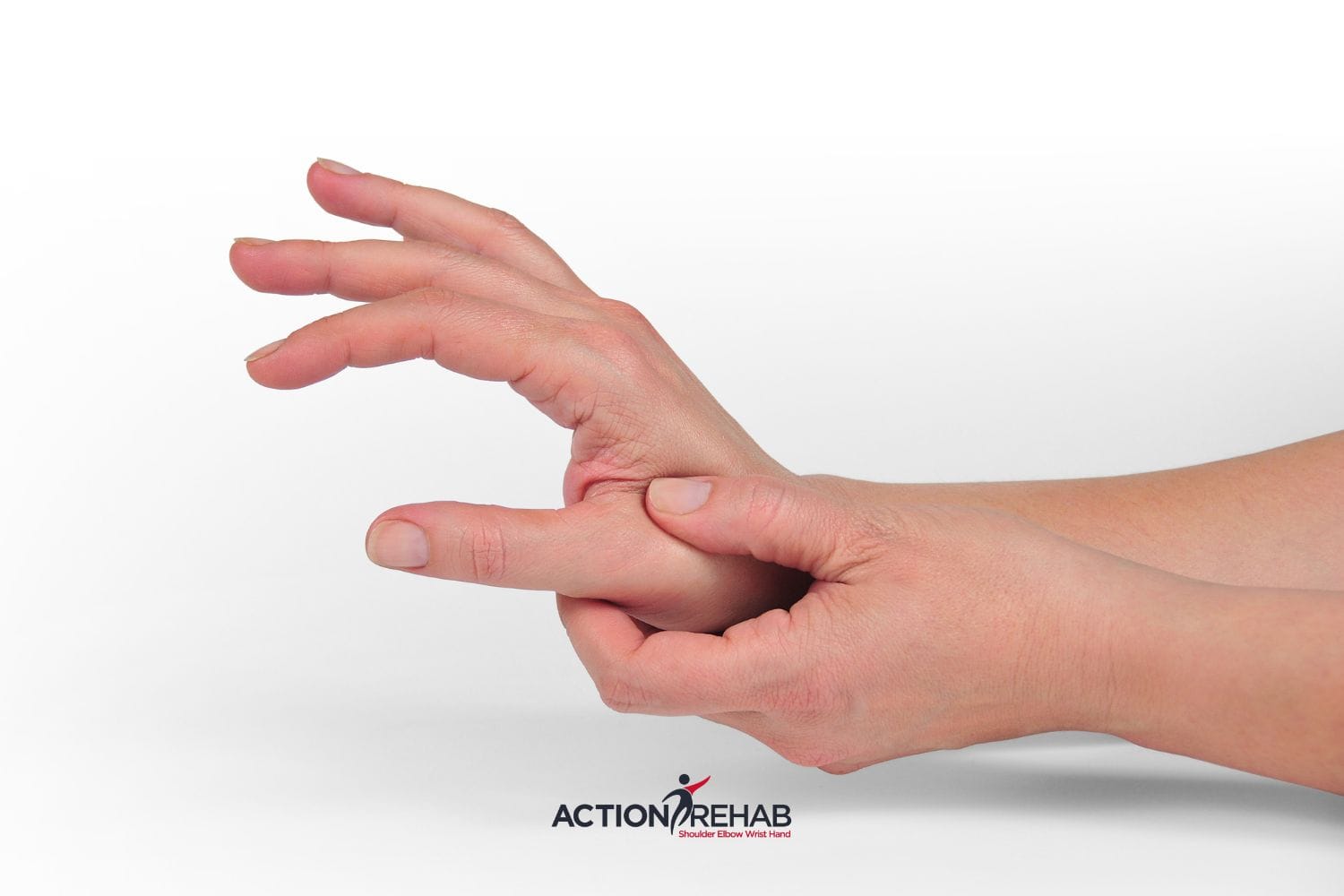De Quervain’s tenosynovitis or syndrome (DQ) refers to the painful symptoms that occur on the radial side of the wrist, due to thickening of the tendons of the abductor pollicis longus and extensor pollicis brevis muscles through the forearm (O’Neill, 2008). As the thickened tendons pass through a fibro-osseous tunnel (the first dorsal compartment), the constant friction causes thickening and myxoid degeneration (as well as inflammation) to occur to the sheath itself – which in turn generates strong pain (O’Neill, 2008).
The causes of DQ are widely disputed through various studies. There may be several attributing factors centred around repetitive work or domestic related tasks such as typing, pinching, grasping, pulling or pushing, and lifting young children. In addition to this, differential diagnoses may occur due to DQ sharing similar symptoms of radial sided wrist pain – such as an unstable wrist, particularly at the scapholunate ligament (SLL). The SLL ligament contains three areas: dorsal, proximal and palmer, and rupture or tear to any or all of these areas can lead to wrist instability. Complete rupture of the SLL usually leads to a Scapholunate advanced collapse (SLAC) however there are increasing patterns and speculation that SLL instability can be a contributing factor to DQ symptoms and can often be misdiagnosed as DQ itself. The following articles discuss or touch on the relation between de Quervain’s and scapholunate instability.
In a retrospective review by Redvers-Chubb (2016), the medical records of 41 patients with DQ were analysed to determine if their DQ had been a result of an underlying traumatic injury in the past, in the absence of a history of repetitive strain. 19 of these patients were found to have had a previous ligament injury or trauma, with 13 of them assessed to have “problematic” scapholunate ligaments. These results were statistically significant. Other ligaments included the 1st CMC joint and several mid-carpal ligaments. The study concludes by suggesting additional diagnostic tests should be administered to rule out ligament injuries or OA such as the Watson’s test and grind test. This research was congruent with a 2002 article by Linscheid and Dobyns who investigated the various ligaments of the wrist and their relationship with flexor and extensor tendons. Linscheid and Dobyns noted that injury to, or instability of the scapholunate ligament (as well as several over proximal and distal row ligaments) can redistribute load in a way that increases pressure on the tendons, leading to thickening of the tendon sheaths and degeneration. Conversely, strengthening the extensor and flexor muscles of the forearm increases stability throughout the ligaments of the wrist.
Wysocki, Biswas and O.Bayne (2012) discuss injection therapy for various musculoskeletal conditions of the hand and wrist. In addition to appropriate indications for a cortisone injection, they specify their accepted method of diagnosis prior to treatment. When discussing DQ symptoms, they emphasise on the importance of scrutinising radiographs for scaphoid or scapholunate ligament pathology, or concomitant degenerative joint disease, particularly at the thumb carpometacarpal (CMC) joint or the wrist, as these conditions will produce radial sided pain which can be misdiagnosed as de Quervain’s Syndrome. Similarly, Licano (2016), discusses the effect of scapholunate instabilities and distal radius fractures on wrist kinematics, and he notes that regardless of fracture, an injury to the scapholunate ligament will eventually result in radial sided wrist pain if untreated. This is the to the sensorimotor nerve endings contained within the interosseous ligament which influence neuromuscular reflexes and unconscious proprioception. Injury to the ligament would prevent the surrounding muscles from performing antagonistic or agonistic movements to maintain the stability of the wrist joint.
Overall, diagnosis and treatment for de Quervain’s tenosynovitis has been heavy studied in conjunction with or parallel to wrist ligament instability. It would appear that more research needs to be completed on their relation to each other, however the general consensus throughout these articles agree that assessment of scapholunate instability should be completed in addition to the typical tests for DQ, when faced with radial sided wrist pain.



















